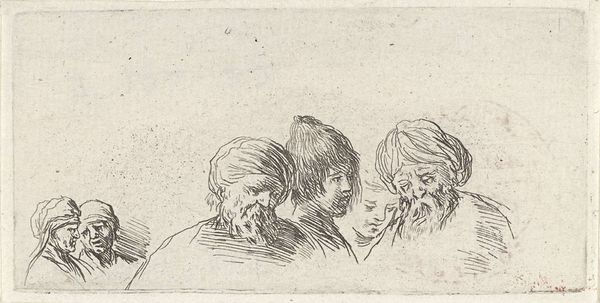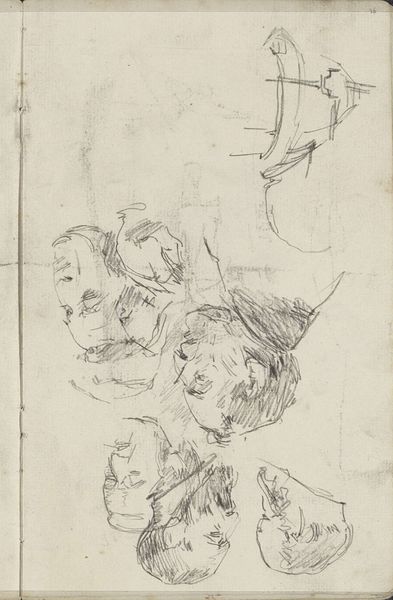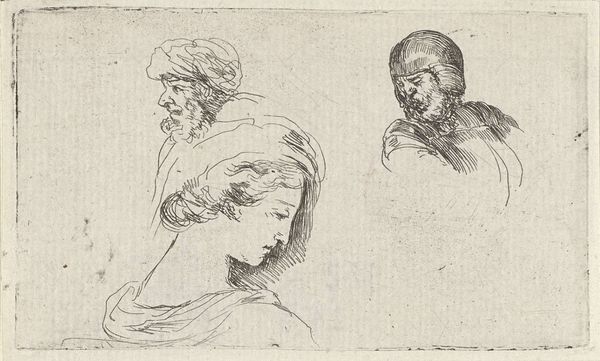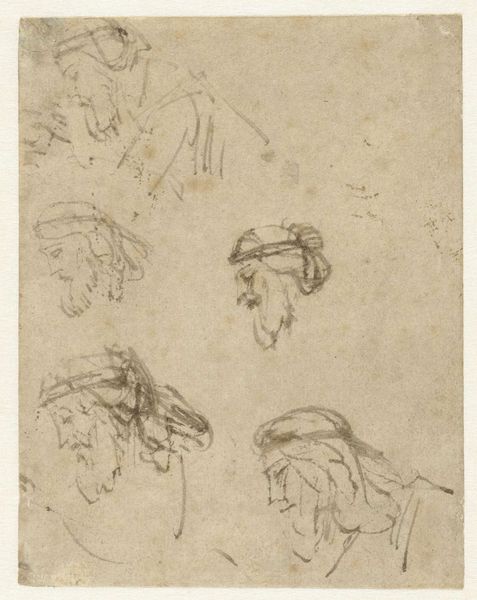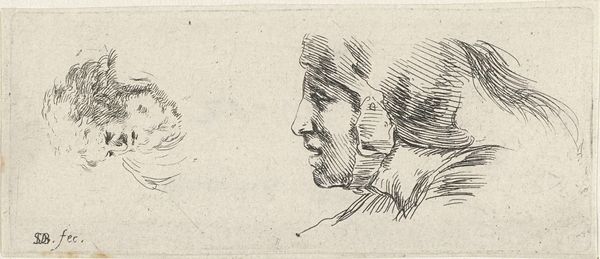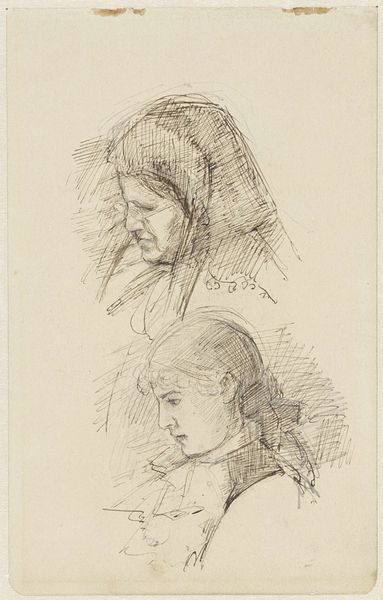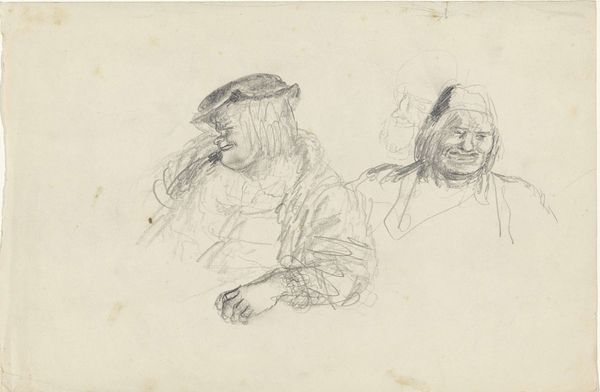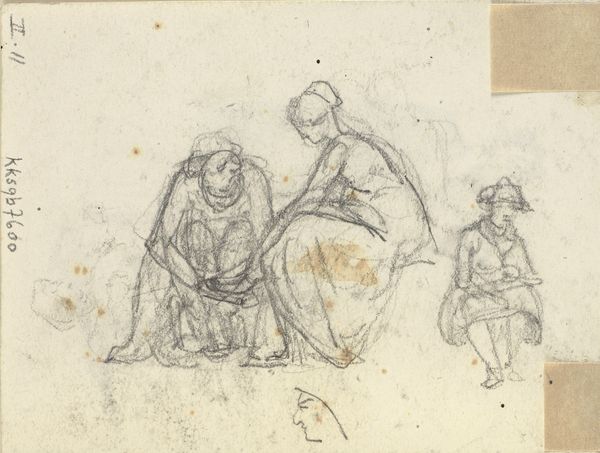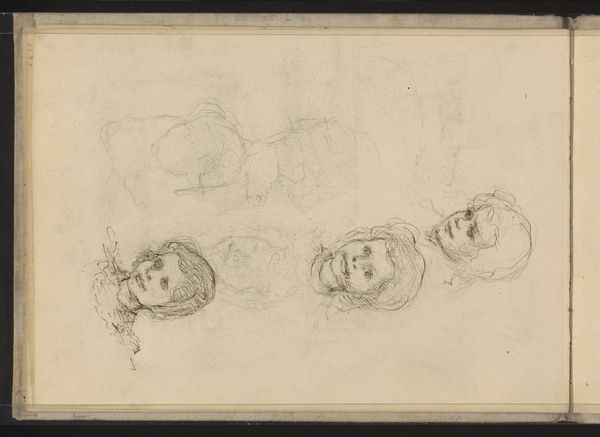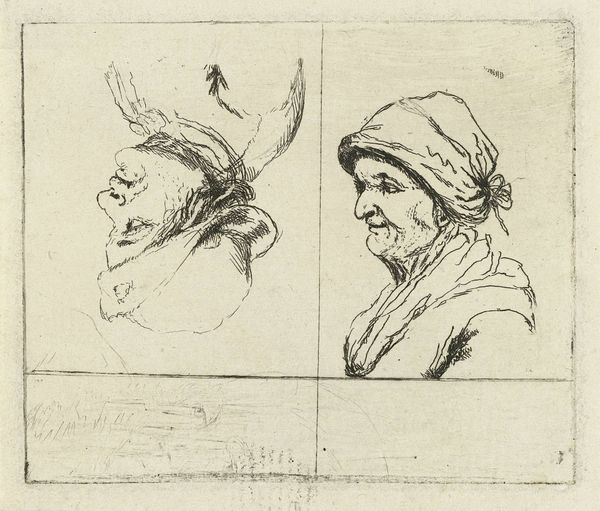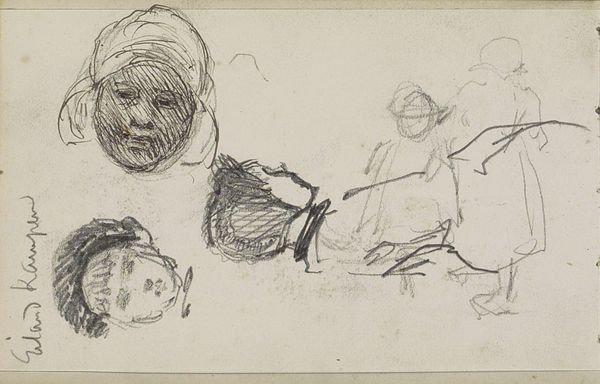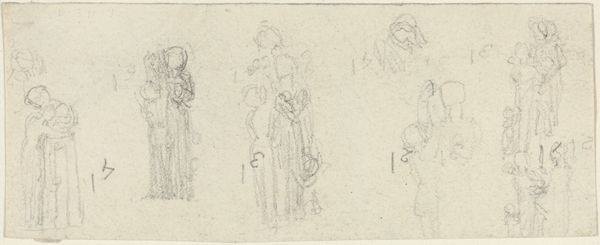
drawing, pen
#
portrait
#
drawing
#
comic strip sketch
#
personal sketchbook
#
idea generation sketch
#
sketchwork
#
ink drawing experimentation
#
pen-ink sketch
#
sketchbook drawing
#
pen
#
genre-painting
#
storyboard and sketchbook work
#
sketchbook art
#
initial sketch
Dimensions: height 60 mm, width 176 mm
Copyright: Rijks Museum: Open Domain
Editor: This is "Koppenstudie" by Christina Chalon, dating roughly from 1758 to 1808. It's a pen drawing currently held at the Rijksmuseum. Looking at the quick, sketched lines, I'm curious about what the artist was trying to capture. What do you see here? Curator: I see the artist engaging with the materials available to her and the social realities of her time. Pen and ink, readily accessible, were tools for exploring and documenting the lives of ordinary people. Consider the "Koppenstudie" not as a finished portrait, but as a record of labor, a glimpse into the working lives that surrounded Chalon. These faces aren’t idealized; they are studies, perhaps for a larger genre scene. Editor: So, it’s less about the artistry and more about the act of recording and the availability of materials? Curator: Precisely! Think about the production of art itself. Who had access to art training? Who was depicted, and how? By focusing on the pen and ink, the paper, and the social status of the figures represented, we get a richer understanding of the work beyond its aesthetic qualities. The quick sketch speaks to accessible art making – a divergence from highly formal portraiture. Editor: That's fascinating! So, the very act of using these materials to depict these people is a statement in itself. Curator: Indeed. It prompts us to think about the materials and means of artistic production in the 18th century. What kind of labor did it take to produce art? How did class affect what art was created and for whom? Consider the paper—where did it come from, who made it? These faces, roughly sketched, force us to engage with labor on multiple levels. Editor: That completely changes how I view the piece. I was initially focused on the faces themselves, but now I see it as a product of its time, reflecting the resources available and the social realities the artist engaged with. Curator: And perhaps, more importantly, revealing to us the questions we should be asking about all art: who makes it, with what, and why?
Comments
No comments
Be the first to comment and join the conversation on the ultimate creative platform.

